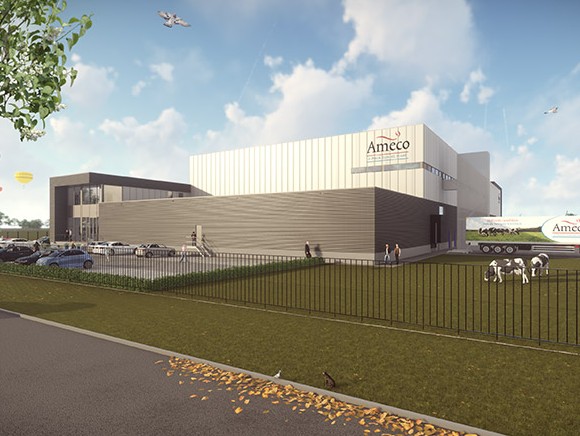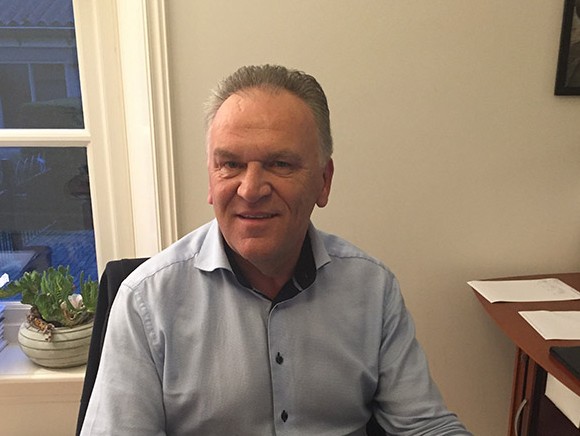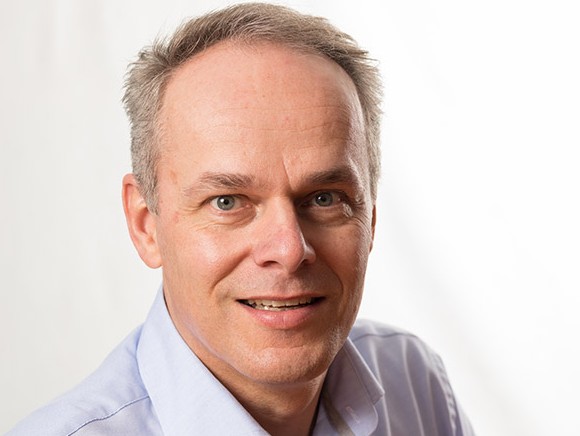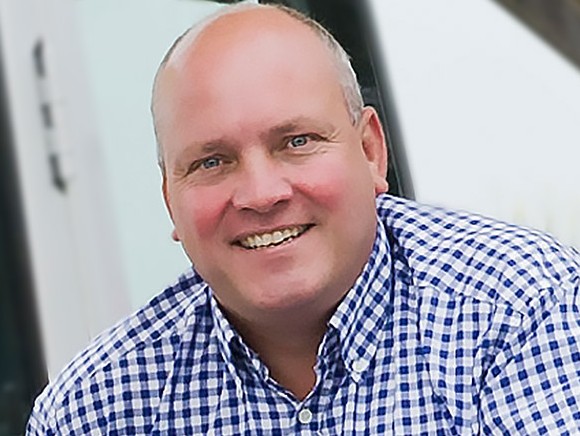
In September 2016 Ameco reached an agreement with a project developer and the local council to leave the Food Center Amsterdam site within the space of a year. At that point it was not yet known where Ameco would build its new facilities, let alone with whom. One thing that was clear to director Jan van Westreenen was that the company had to be fully operational again by October 2017. Thanks to a unique partnership and unshakable trust between the project partners, they are on track to achieve that aim.
Jan van Westreenen learnt the tricks of the livestock trade from his father and set up his own business called Ameco, short for Amsterdam Meat Company, to slaughter and process high-quality Dutch cattle. The company has been based at the Food Center Amsterdam location since 1985 but the site is now being redeveloped, forcing the company to relocate. In September 2016 Van Westreenen reached a deal with the project developer and the local council, giving him precisely 13 months in which leave. This meant just 13 months for Ameco to find a new location, arrange financing, form a construction team and build a new slaughterhouse in order to be fully operational again by October 2017.
At the time of writing, in spring 2017, we are approximately halfway along and the steel frame structure is already finished. The building project is on schedule. This is a good time for all those involved to reflect on the progress so far, and on just how unique this project has become.

Jan van Westreenen, director of Ameco, comments: “We signed the agreement to leave on 8 September and on 14 September we had a meeting with commercial property specialist Aan de Stegge, at which time we still had to decide on our new location. I wanted to base the company in the middle of the country. In the end, we chose Apeldoorn. Aan de Stegge said: ‘There’s only one way to do this and that’s to avoid a drawn-out offer process.’ We appointed Promad as independent project leader. I was so impressed by the professionalism of Aan de Stegge. They have the necessary knowledge and experience and deliver on their promises. They also keep tight hold of the reins. They approached Bessels and we knew then that everything would be OK. We explained the situation and Bessels immediately said: ‘Fine, then we’ll continue working over Christmas.’ We have a special partnership with the Municipality of Apeldoorn too; they continually take a practical, problem-solving approach and they complete the necessary procedures very quickly.
The thing I’m most proud of is the whole building – the engineering – from top to bottom. In the new set-up, one significant practical improvement is that the deboning work will be less strenuous for my employees. A 300kg carcass will now be divided up into 15kg sections rather than 75kg ones. That’s much less physically demanding, which means that the work can now be done by a larger group of employees.
There’s a strong sense of unity between all the parties involved. If you have the same outlook on things, you can accomplish a lot. Everyone is tremendously enthusiastic. There’s only one way to achieve that: ensuring that everyone gets on well together.”

Herman Bessels from the architectural firm Bessels Architekten & Ingenieurs: “The collaboration between the partners was even more effective because we made use of state-of-the-art digital techniques. Thanks to technological advancements, we can all work in one and the same digital building information model. Building Information Modelling (BIM) is a 3D technique in which people from various disciplines can work together integrally yet in parallel; it’s the new approach to construction.
BIM enables you to create a complete building virtually so you can ‘walk around’ in it. Everyone involved has an insight into what the project will deliver and which consequences their choices will have. That avoids situations in which people say: ‘Did I order this?’ Automation has only just started in the construction industry; we’re emerging from the Stone Age. Not everyone is completely familiar with this system. When they are, construction projects will move even more quickly.
One notable thing about the building design is that all the disciplines – offices, livestock housing, clean areas and production areas – will all be located off a large, central hall. That will create a stronger social aspect. But also, from a commercial perspective, the business is in no way a collection of separate components. Instead, it’s one big, multifaceted company.”

Bas te Riele from main contractor Aan de Stegge Twello BV: “We sat down at the table together very early on in the process and we worked with Ameco to draw up a Programme of Requirements. There wasn’t even a drawing at that time, and we’d only known each other for five weeks. It wasn’t even clear whether the financing could be arranged at first, so both sides took certain financial risks.
We trust one another’s choices of architect, construction company, environmental advisor, project leader and installation companies. In the subsequent months, we met up every Tuesday to discuss everything – in what we called ‘pit-stop sessions’. Each meeting was also attended by someone from the slaughterhouse, with practical experience. Altogether, there was a huge wealth of knowledge present at the table. Every two weeks we adjusted the building plans, and if necessary the budget, in line with reality. This – together with an entrepreneur who makes quick decisions and is adaptive – ensured a streamlined process.
This partnership is the opposite of a tender situation, in which parties often fail to work together – and that leads to planning- and quality-related problems in the execution phase, which tend to result in higher costs for the customer. For us, it hasn’t been about point-scoring at each other’s expense. Thanks to the way Ameco approaches things, a suitable building will be constructed within the agreed budget. It’s a joy to work on projects like these.”

Tom Kroes from BDO Mergers & Acquisitions: “At BDO M&A, we assisted Ameco in the negotiations related to the company’s move from its current Food Center Amsterdam location. BDO M&A also had the privilege of structuring and supervising the entire financing procedure. Ameco is a leader within the Dutch beef processing sector and is regarded as an important and innovative industry player. The company is a pioneer in the valorisation of by-products from the slaughter process, for example. That’s a perfect fit with the current view of doing business sustainably. Under immense time pressure, BDO M&A and Ameco together succeeded in winning the support of a number of financiers for the entrepreneur’s vision, despite the banks being reluctant to finance new-build projects with a specific purpose. The short time frame meant that several processes – construction, financing, permit applications – had to run in parallel, which called for a certain degree of improvisation, flexibility and creativity sometimes.
Being involved in this project was a very unique experience and we are proud to have been able to contribute to realising what will be one of the most modern slaughterhouses in Europe. All the partners have participated in this process with the utmost commitment, enthusiasm and an unshakable belief that it would succeed.”

As delegated project manager, Rob Stekelenburg from project management and engineering firm Promad represents the customer’s interests. He comments: “My first reaction? It’s very ambitious. But I said ‘yes’ because of the construction team that had been formed, which is made up entirely of people with extensive experience in food. We realised our first slaughterhouse 20 years ago and are now involved with several of these kinds of projects per year. We maintain a helicopter view; we’re the oil that keeps the engine running smoothly.
Right at the start we asked each other the question: Are we going to go for it together? Yes. It’s a commitment. The construction team is not only made up of the people who have contact with one another on a daily basis; the local council and utilities companies have stuck their necks out too. Whereas we met up every week for the first few months, we’ve now reduced that to the more common once a fortnight.
The speed of this project is a major accomplishment. The first stake was driven into the ground on 18 February and the steel frame structure is already 95% complete – without utilising modular construction. The challenge now is to complete the rest of the building work. The partners are giving it their all and the people are in place, but the biggest challenge now appears to be getting everything delivered on time.”
Apart from the partners mentioned above, JVZ Ingenieurs and Mulders Milieu Advies have also made a contribution within the construction team. In conclusion, Bessels states: “In the 1990s it took 13 months just to get the permits approved. Now, we’re completing the whole project within the same time frame. And once all partners have got used to working with BIM, it will be possible to work even more quickly in the future.”
Source: © Vakblad Voedingsindustrie 2017